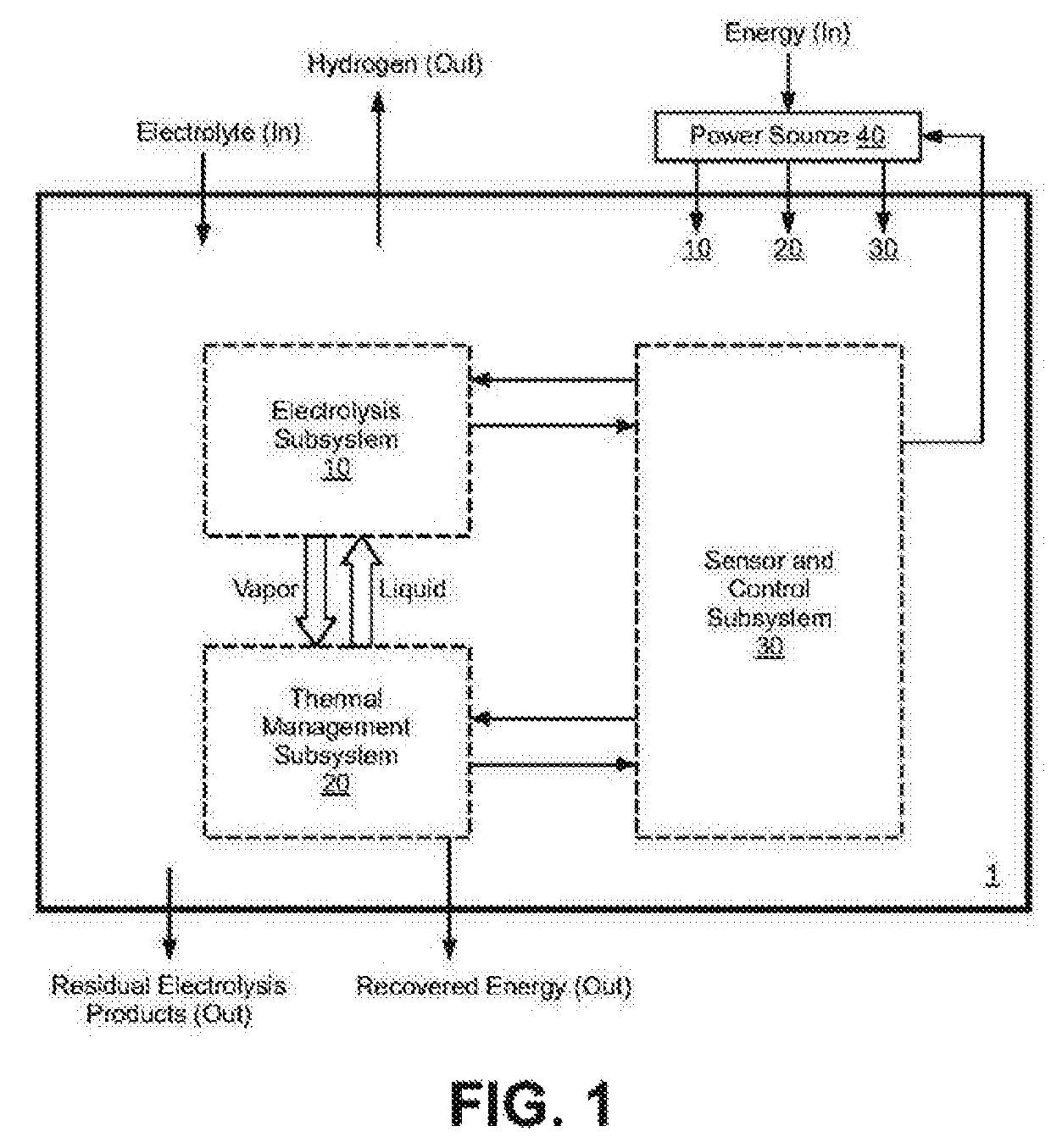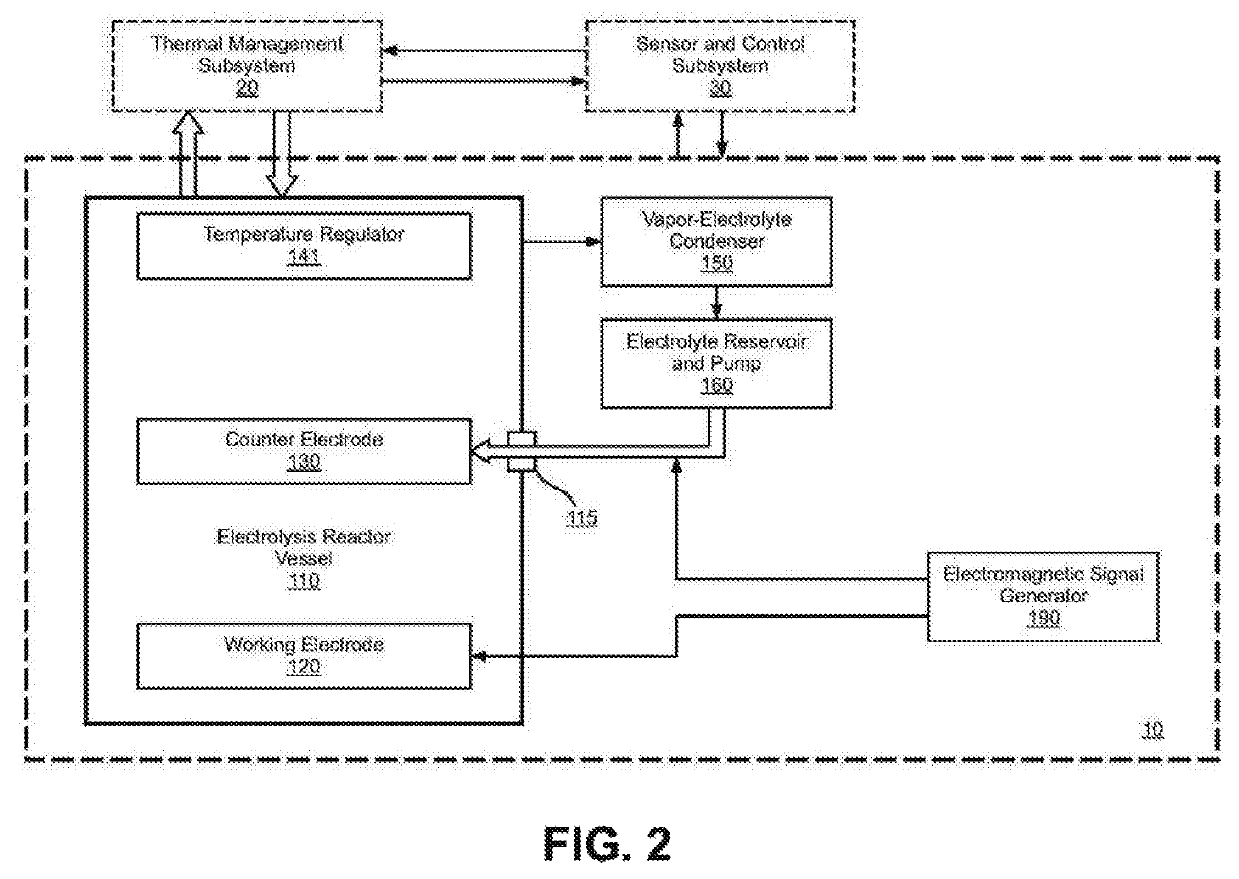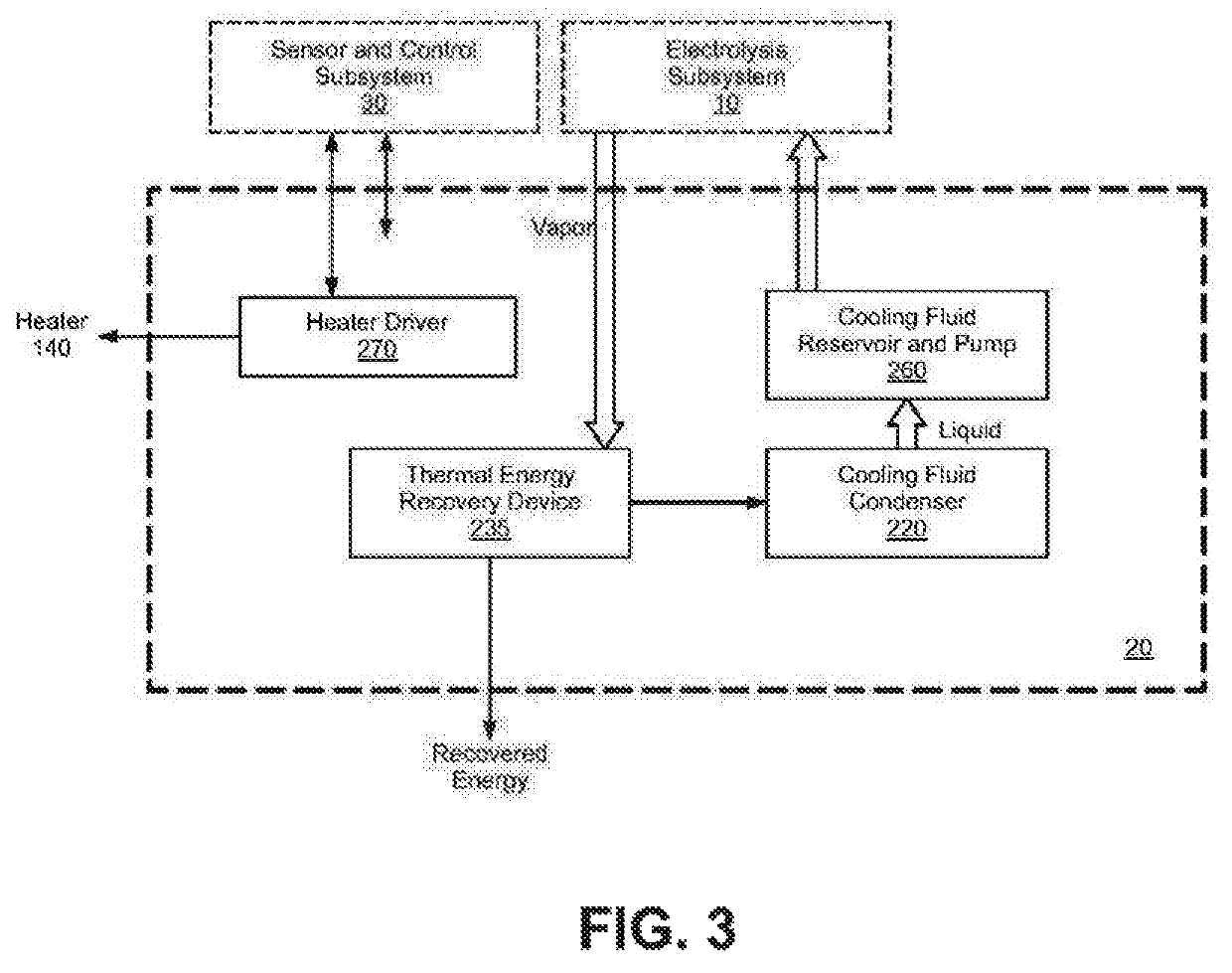Electrolysis reactor system
a reactor system and electrolysis technology, applied in the field of electrolysis reactor systems, can solve the problems of unacceptable levels of greenhouse gas emissions, low lack of energy, so as to improve the efficiency of high-temperature electrolysis, increase the diffusion rate of hydrogen, and reduce the effect of energy consumption
- Summary
- Abstract
- Description
- Claims
- Application Information
AI Technical Summary
Benefits of technology
Problems solved by technology
Method used
Image
Examples
Embodiment Construction
Definitions
For purposes of this document, the following definitions apply:
[0044]Electrolysis: The passage of an electric current through an electrolyte with subsequent migration of positively and negatively charged ions to the negative and positive electrodes.
[0045]Electrolyte: A solid, liquid, mist, vapor, or gas containing charged ions that are mobile in the presence of an electric field. A mist is small droplets of liquid or particles that are dispersed in a gas. Examples of electrolytes include but are not limited to: A proton conductor in an electrolyte, typically a solid electrolyte, in which H-ions are the primary charge carriers. Electrolyte liquids and mists are normally formed when a salt is placed into a solvent such as water and the individual components dissociate due to the thermodynamic interactions between solvent and solute molecules, in a process called solvation. It is also possible for substances to react with water producing ions, e.g., carbon dioxide gas dissol...
PUM
| Property | Measurement | Unit |
|---|---|---|
| temperature | aaaaa | aaaaa |
| energy | aaaaa | aaaaa |
| electrical potential | aaaaa | aaaaa |
Abstract
Description
Claims
Application Information
 Login to View More
Login to View More - R&D
- Intellectual Property
- Life Sciences
- Materials
- Tech Scout
- Unparalleled Data Quality
- Higher Quality Content
- 60% Fewer Hallucinations
Browse by: Latest US Patents, China's latest patents, Technical Efficacy Thesaurus, Application Domain, Technology Topic, Popular Technical Reports.
© 2025 PatSnap. All rights reserved.Legal|Privacy policy|Modern Slavery Act Transparency Statement|Sitemap|About US| Contact US: help@patsnap.com



